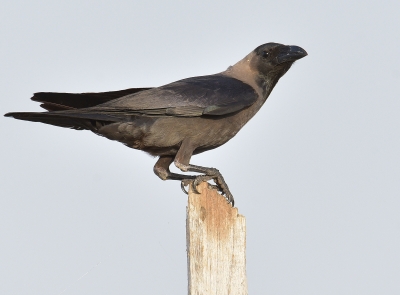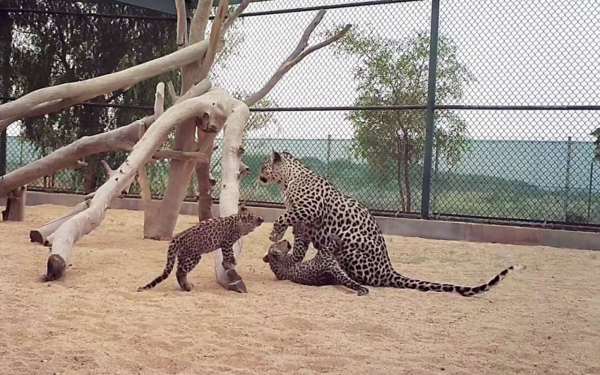
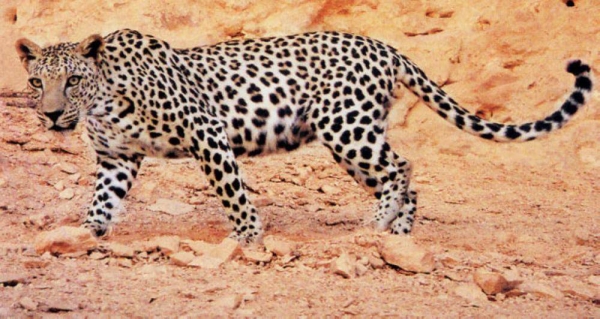
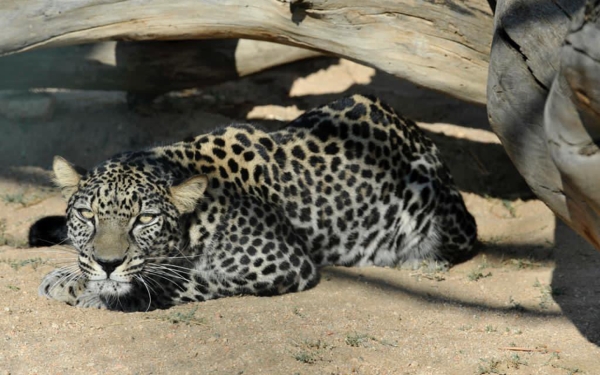
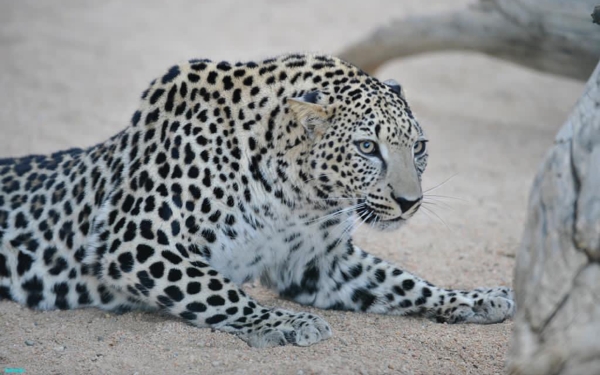
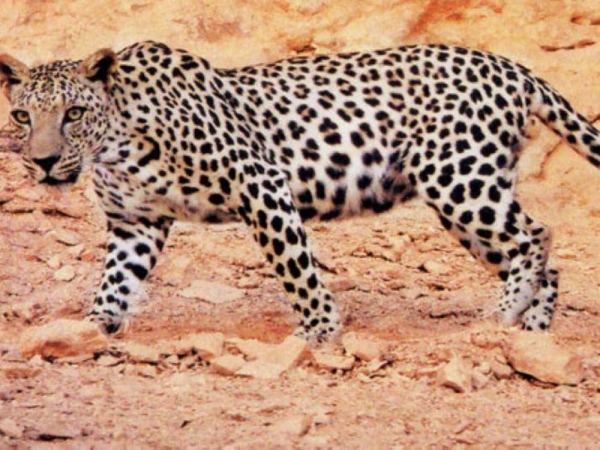
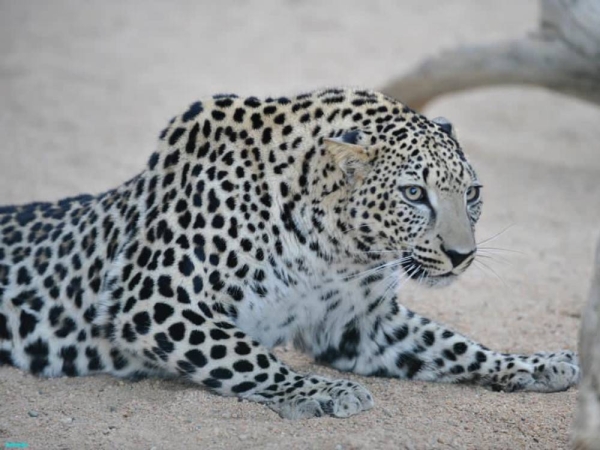

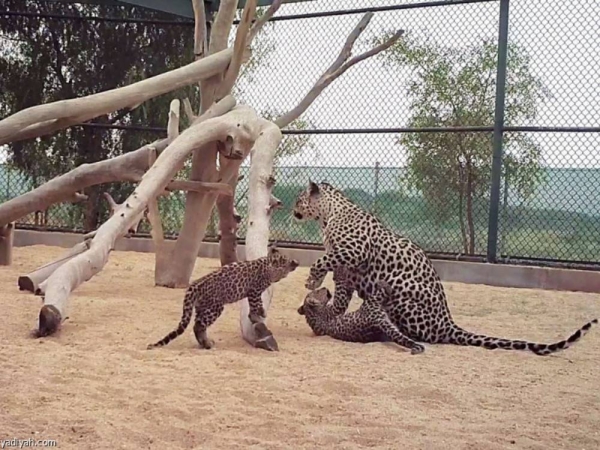
The Arabian leopard is a carnivorous mammal belonging to the Felidae family and is an endangered species. AlUla Province in the Kingdom of Saudi Arabia has been an ancient habitat throughout history for the Arabian Leopard. It was also seen in the highlands of the Aseer Province.
The Arabian Leopard lives in high mountains and remote areas far from human settlements, and it does not attack humans unless provoked. It is one of the rarest wild animals in Saudi Arabia and globally, according to the classification of the International Union for Conservation of Nature (IUCN). The total number of Arabian Leopards in the world is currently estimated at two hundred, of which fifty are found in Saudi Arabia.
Arabian Leopard characteristics
Arabian Leopards are distinguished by their physical characteristics, most notably their small size and light color. Unlike other leopard subspecies, they lack the golden-yellow color found between the spots throughout most of their body. Instead, this color is only present along their backs, fading to a pale yellow or white on the rest of their body. Additionally, their eyes are blue, unlike their African counterparts.
The female Arabian Leopard weighs around twenty kg, while the male weighs approximately thirty kg. Males are generally larger compared to females. The Arabian Leopard is easily recognizable by its long tail which assists it in maintaining balance while climbing.
The diet of the Arabian Leopard
Arabian Leopards typically feed on domesticated cattle, especially goats, due to the scarcity or disappearance of their natural prey, such as Arabian tahr and mountain gazelle, in some of the countries they inhabit. They also prey on foxes, small mammals, birds, and ibex. Arabian Leopards hunt their prey during dusk and dawn, and they are more active during the night, spending their days in shaded and hidden locations.
Arabian Leopard reproduction
The female Arabian Leopard gives birth after a gestation period lasting from ninety-eight to one hundred days, typically giving birth to one to three cubs in a cave or rocky crevice. The cubs are born blind, and their eyes open after nine to ten days, allowing them to start exploring their surroundings. The young leopards do not venture out alone until they reach the age of four weeks. During the first few weeks, the mother works to ensure the safety of her cubs by moving them from one den to another, reducing the chances of other predators finding them. The average lifespan of Arabian Leopards in the wild is between eight to ten years, while it extends up to twenty years in captivity centers.
Conservation of the Arabian Leopard
Efforts are being made by Saudi Arabia to protect the Arabian Leopard and prevent its extinction by creating natural reserves for it to thrive in. In addition, measures are being taken to limit deforestation and tree-cutting. The authorities are also imposing fines and penalties for illegal hunting, whether it be targeting predators in general or hunting their prey like rabbits, hyrax, and wild birds. February 10th is annually commemorated as Arabian Leopard Day to emphasize its significance.
The Arabian Leopard Fund
The government of Saudi Arabia, under the direction of Crown Prince and Chairman of the Council of Ministers, His Royal Highness Prince Mohammed Bin Salman Bin Abdulaziz, established the Arabian Leopard Fund in the Sharaan Nature Reserve in AlUla Province to protect the Arabian Leopard and raise awareness about its environmental importance. The Royal Commission for AlUla seeks assistance from international experts and collaborates with national and regional organizations to conserve the Arabian Leopard. They also promote necessary awareness campaigns to minimize harmful behaviors.
Related quizzes
Related articles


